Colloquia and Seminars (Previous Years)
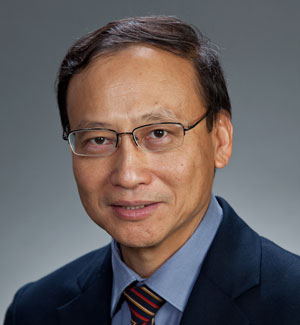 Prof. Kelvin Cheng received his B.S. (1978) and M.Phil. (1980) in Physics from the Chinese University of Hong Kong and a Ph.D. (1983) also in Physics from the University of Waterloo, Canada. His thesis research involved experimental polymer physics and biological physics. After graduation, he ventured to the Department of Pathology at the University of Virginia School of Medicine for his first postdoctoral training in Immunohematology. His research involved measuring the assembling kinetics of the highly cytotoxic complement protein complexes on cell surfaces upon immunoresponse. With the title of Cancer Research Scientist, his second postdoctoral training was in the biophysics of calcium transport protein at Roswell Park Cancer Research Institute in Upstate New York. Based on his postdoctoral work in protein biophysics, he was awarded a five-year career development grant by the National Cancer Institute of NIH in 1987. After a brief one-year stint as a lecturer in Physics and a visiting assistant professor in Biochemistry at SUNY/Buffalo, he moved his biophysics research lab from Buffalo, New York to Lubbock, Texas. He is currently a full professor and the director of molecular biophysics lab in the Physics Department of Texas Tech University. His current research interests are in Nanosensor, Protein Unfolding, Membrane Biophysics and Physics Education. His research involves undergraduate and graduate students from different disciplines. Other than academic research, he was a consultant for a start-up biotechnology company based in Houston, Texas for several years. Recently, he received an NIH-STEM award to study the effectiveness of research-based laboratory reform on improving the conceptual understanding and problem-solving skills of students enrolled in large introductory physics courses. He is currently on leave from Texas Tech and is taking the title of Williams Professor of Physics at Trinity University in the Department of Physics and Astronomy.
Prof. Kelvin Cheng received his B.S. (1978) and M.Phil. (1980) in Physics from the Chinese University of Hong Kong and a Ph.D. (1983) also in Physics from the University of Waterloo, Canada. His thesis research involved experimental polymer physics and biological physics. After graduation, he ventured to the Department of Pathology at the University of Virginia School of Medicine for his first postdoctoral training in Immunohematology. His research involved measuring the assembling kinetics of the highly cytotoxic complement protein complexes on cell surfaces upon immunoresponse. With the title of Cancer Research Scientist, his second postdoctoral training was in the biophysics of calcium transport protein at Roswell Park Cancer Research Institute in Upstate New York. Based on his postdoctoral work in protein biophysics, he was awarded a five-year career development grant by the National Cancer Institute of NIH in 1987. After a brief one-year stint as a lecturer in Physics and a visiting assistant professor in Biochemistry at SUNY/Buffalo, he moved his biophysics research lab from Buffalo, New York to Lubbock, Texas. He is currently a full professor and the director of molecular biophysics lab in the Physics Department of Texas Tech University. His current research interests are in Nanosensor, Protein Unfolding, Membrane Biophysics and Physics Education. His research involves undergraduate and graduate students from different disciplines. Other than academic research, he was a consultant for a start-up biotechnology company based in Houston, Texas for several years. Recently, he received an NIH-STEM award to study the effectiveness of research-based laboratory reform on improving the conceptual understanding and problem-solving skills of students enrolled in large introductory physics courses. He is currently on leave from Texas Tech and is taking the title of Williams Professor of Physics at Trinity University in the Department of Physics and Astronomy.
Abstract:
Early interaction events of beta-amyloid (Aβ) proteins with neurons have been associated with the pathogenesis of Alzheimer’s disease. At present, knowledge pertaining to the role of lipid molecule in modulating the single Aβ interactions with neurons at the atomic length and picosecond time resolutions remains unclear. We have used atomistic molecular dynamics simulations to explore the protein insertion kinetics, protein unfolding and protein-induced membrane disruption of Aβ in cholesterol-enriched and -depleted nanodomains. Independent simulation-replicates each with an initial structure of Aβ partially embedded into the upper layer of the lipid bilayer, a possible location of Aβ immediately upon its release from the amyloid precursor protein by proteolytic cleavage in-vivo, have been generated. Our results demonstrate that the rate of Aβ insertion is proportional to the transmembrane helix length of the lipid insertion domain (Lys28 to C-terminus) of the protein and that cholesterol “protects” the Aβ-induced membrane disruption and prevents beta-sheet formation of Aβ on the surface of the lipid bilayers. The latter could represent the seeding-template for the formation of toxic oligomeric Aβ leading to the pathogenesis of Alzheimer’s disease.
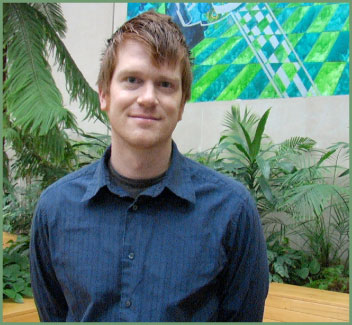 Dr. Scott Bogner is an Assistant Professor of Physics at Michigan State University. Dr. Bogner received his Ph. D. degree in theoretical nuclear physics from the State University of New York at Stony Brook in 2002, where he developed new many-body methods to derive microscopic Hamiltonians and effective operators for nuclear shell model applications. After postdocs at the Institute for Nuclear Theory and the Ohio State University, he became an assistant professor at Michigan State University, where he has held joint appointments at the National Superconducting Cyclotron Laboratory and the department of Physics since 2007. Dr. Bogner's main research interests are in nuclear few- and many-body problems. In particular, he is interested in applying renormalization group and effective field theory methods to extend the ab-initio many-body frontier to heavier nuclei and nuclei far from stability, and to develop a microscopically-based density functional theory capable of describing nuclei across the mass table. More information about Dr. Bogner and his research may be found at http://nscl.msu.edu/directory/bogner.html.
Dr. Scott Bogner is an Assistant Professor of Physics at Michigan State University. Dr. Bogner received his Ph. D. degree in theoretical nuclear physics from the State University of New York at Stony Brook in 2002, where he developed new many-body methods to derive microscopic Hamiltonians and effective operators for nuclear shell model applications. After postdocs at the Institute for Nuclear Theory and the Ohio State University, he became an assistant professor at Michigan State University, where he has held joint appointments at the National Superconducting Cyclotron Laboratory and the department of Physics since 2007. Dr. Bogner's main research interests are in nuclear few- and many-body problems. In particular, he is interested in applying renormalization group and effective field theory methods to extend the ab-initio many-body frontier to heavier nuclei and nuclei far from stability, and to develop a microscopically-based density functional theory capable of describing nuclei across the mass table. More information about Dr. Bogner and his research may be found at http://nscl.msu.edu/directory/bogner.html.
Abstract:
Renewed interest in the physics of nuclei is fueled by experiments at rare isotope beam facilities, which open the door to new regions of exotic nuclei; by astrophysical observations and simulations of neutron stars and supernovae, which require controlled extrapolations of the equation of state of nucleonic matter in density and isospin; and by studies of universal physics, which unite cold atom and dilute neutron physics. Progress on the nuclear many-body problem has long been hindered by the strong coupling between low- and high-energy states induced by typical nuclear Hamiltonians, which is manifested as highly correlated many-body wave functions and nonperturbative few and many-body systems. In this colloquium I describe how the interplay and coalescence of different threads: rapidly increasing computational power, effective field theory (EFT), and renormalization group (RG) transformations are enabling the development of new many-body methods and the revival of old ones to successfully attack these problems.
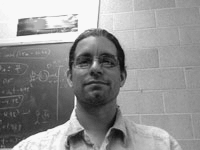 Dr. Sébastien Cormier is currently a Research Associate in the Astronomy Department at the University of Arizona. He received his PhD in Physics Education Research from the City University of New York. His research includes investigations of the impact that Astronomy 101 or participation in Citizen Science programs have on attitudes towards science.
Dr. Sébastien Cormier is currently a Research Associate in the Astronomy Department at the University of Arizona. He received his PhD in Physics Education Research from the City University of New York. His research includes investigations of the impact that Astronomy 101 or participation in Citizen Science programs have on attitudes towards science.
Abstract:
The Center for Astronomy Education (CAE) conducts fundamental research that informs thecreation of curriculum and assessment tools in order to improve teaching and learning in theAstro 101 classroom. I will describe various CAE research projects, starting with our national network of professional development workshops and its impact on the nation’s Astro 101instructors. Next I will describe the Citizen Science projects, developed by Zooniverse, which allow volunteers to contribute to scientific research by working with actual scientific data. CAEcreated, validated, and implemented two surveys to measure the impact that participation in Moon Zoo and Galaxy Zoo has on user conceptual knowledge. I will then describe our national archive of research-validated multiple choice questions and the accompanying Question Complexity Rubric to rank the questions by difficulty. Finally, I will describe our interactiveAstro 101 mega-class (700 < Nstudents < 1200) and the scaling challenges that it presented.
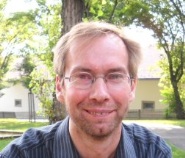 Dr. Michael Endl is a Research Scientist in Astronomy with the University of Texas at Austin's McDonald Observatory. He did most of the work for his PhD thesis at the European Southern Observatory in Chile. His thesis work led to the discovery of the first giant planet in the habitable zone of another star. He obtained his doctoral degree in 2001 from the University of Vienna, Austria. A month later he started as a postdoctoral research fellow at UT Austin and became a Research Scientist in 2007. His main scientific interests are the detection and characterization of so-called exoplanets, planets orbiting other stars than the Sun. Michael blames his life-long interest in Astronomy on seeing Kubrick's "2001 A Space Odyssey" as a little kid in Vienna. Nowadays most of his scientific life revolves around NASA's Kepler mission, the first project that can actually discover Earth-like planets around other stars and determine how frequent they are in our Galaxy. Michael lives in Austin with his wife and two small children.
Dr. Michael Endl is a Research Scientist in Astronomy with the University of Texas at Austin's McDonald Observatory. He did most of the work for his PhD thesis at the European Southern Observatory in Chile. His thesis work led to the discovery of the first giant planet in the habitable zone of another star. He obtained his doctoral degree in 2001 from the University of Vienna, Austria. A month later he started as a postdoctoral research fellow at UT Austin and became a Research Scientist in 2007. His main scientific interests are the detection and characterization of so-called exoplanets, planets orbiting other stars than the Sun. Michael blames his life-long interest in Astronomy on seeing Kubrick's "2001 A Space Odyssey" as a little kid in Vienna. Nowadays most of his scientific life revolves around NASA's Kepler mission, the first project that can actually discover Earth-like planets around other stars and determine how frequent they are in our Galaxy. Michael lives in Austin with his wife and two small children.
Abstract:
We live in an extraordinary age. For the first time in human history our technology allows us to answer the question whether planets like Earth are rare or common in the Universe. This is the primary science goal of NASA's Kepler mission. I will give an overview of the mission and its progress toward this goal. I will also describe the Texas contribution by our group at McDonald Observatory, which is deeply involved in the mission. I will highlight several new results from Kepler and discuss their implications for our understanding of the formation and early evolution of planetary systems.
 Prof. Matt Wood received his BS from Iowa State University in 1983 and his Ph.D. from the University of Texas at Austin in 1990. He is currently a Professor and the director of the NSF funded REU (Research Experience for Undergraduates) program in the Department of Physics and Space Sciences at Florida Institute of Technology. Dr. Wood and his students are involved in both theoretical and observational studies of close interacting binary stars and of the white dwarf stars. His primary research area is the numerical modeling of the accretion flows between the interacting close binary stars known as cataclysmic variables. Dr. Wood models the fluid dynamics of accretion disks on computers using the method of smoothed particle hydrodynamics. In addition, Dr. Wood continues his research into the evolution of white dwarf stars in collaborations with many astronomers using telescopes at several observatories around the world. More information about Prof. Matt Wood and his research can be found at http://www.fit.edu/faculty/profiles/profile.php?value=196
Prof. Matt Wood received his BS from Iowa State University in 1983 and his Ph.D. from the University of Texas at Austin in 1990. He is currently a Professor and the director of the NSF funded REU (Research Experience for Undergraduates) program in the Department of Physics and Space Sciences at Florida Institute of Technology. Dr. Wood and his students are involved in both theoretical and observational studies of close interacting binary stars and of the white dwarf stars. His primary research area is the numerical modeling of the accretion flows between the interacting close binary stars known as cataclysmic variables. Dr. Wood models the fluid dynamics of accretion disks on computers using the method of smoothed particle hydrodynamics. In addition, Dr. Wood continues his research into the evolution of white dwarf stars in collaborations with many astronomers using telescopes at several observatories around the world. More information about Prof. Matt Wood and his research can be found at http://www.fit.edu/faculty/profiles/profile.php?value=196
Abstract:
Cataclysmic variable (CV) systems are mass transfer binary star systems with white dwarf primaries, low-mass main sequence secondaries, and an accretion disk that typically provides most of the system luminosity. The primary mission of the NASA Kepler satellite is to detect earthlike planets in the habitable zone of sunlike stars, but the mission has also been a gold mine for asteroseismological studies of CVs and pulsating stars owing to the years-long light curves being obtained for these objects. The Kepler field contains 16 known CVs, and I will discuss the highlights of the science results obtained from these observations and smoothed particle hydrodynamics (SPH) simulations of CV accretion disks. The systems V344 Lyr, V1504 Cyg, and MV Lyr hav been observed by the Kepler instrument at a 1-min cadence since 2009 June 20, and as a result are now the CVs with the best time-series data in history. The first two of these systems are rich in their behavior and promise to be touchstones for CV studies for the foreseeable future. The Kepler data and SPH models reveal that two physical sources yield positive superhumps: viscous dissipation within the periodically flexing disk, and the signal generated as the accretion stream bright spot sweeps around the rim of the non-axisymmetric disk. The V344 Lyr and V1504 Cyg data also reveal negative superhumps arising from accretion onto a tilted disk precessing in the retrograde direction. The changing negative superhump period results from a changing precession rate, which in turn results from a changing mass distribution within the disk. At present, the source of accretion disk tilt in cataclysmic variables is unknown, however the Kepler data show that negative superhumps may be excited during disk outburst events. Further study of the Kepler CVs system may conclusively reveal the physical source of accretion disk tilt as well as more generally constrain the microphysics and macroscopic effects of viscosity in differentially-rotating astrophysical plasmas.
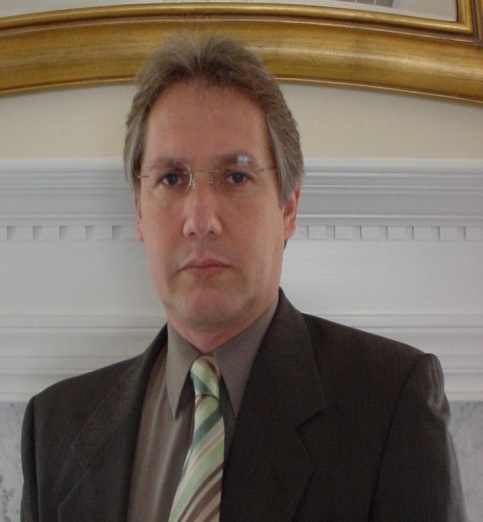 Dr. Steven C. Tidrow is an Associate Professor in and Chair of the Department of Physics and Geology at The University of Texas – Pan American (2007-present). He earned degrees, a Bachelor of Science in Engineering Physics with Specialization in Electrical Engineering and a Master of Science in Applied Physics, from Texas Tech University in 1984 and 1986, respectively, and, a Doctor of Philosophy in Engineering Physics, from the University of Oklahoma in 1991. As a National Research Council Associate at the U.S. Army Research Laboratory, he investigated high critical temperature superconductors from 1991 to 1994. From 1994 to 2007, Dr. Tidrow served as an Electronics Engineer at the U.S. Army Research Laboratory where he investigated perovskite material and devices, acted as Leader for the RF Perovskite Material and Devices Team (1998-2007), as Leader for the Sensors for Prognostics and Diagnostics Team (2004-2006), as a Materials Consultant to Frequency Control (1998-2006), and as a National Research Council Advisor (1996-2007). Dr. Tidrow is inventor on twenty-eight issued United States Patents pertaining to materials, processing and devices, was recipient of a 2002 Army Research Development and Achievement Award, was a co-recipient for the “Material/Product Performance Award” at the 1997 International Workshop on Superconductivity in Kamuela, Hawaii, has chaired numerous conference sessions, served on international organizing committees including serving as chair of two organizing committees, has co-authored one book chapter, has been an editor of two conference proceedings, has published numerous scientific articles, has overseen two National Research Council Associates and reviewed two Ph.D. Thesis. Dr. Tidrow serves, 1997 to present, as an Adjunct Assistant Professor in the Department of Physics and Astronomy at the University of Kansas and is currently Vice-Chair of the Electronics Division of the American Ceramic Society. Dr. Tidrow’s areas of research interest include RF sensing, microwave material and device characterization, materials for energy storage and energy conversion, as well as perovskite materials and devices including RF tunable materials and frequency agile RF components for multi-function RF systems.
Dr. Steven C. Tidrow is an Associate Professor in and Chair of the Department of Physics and Geology at The University of Texas – Pan American (2007-present). He earned degrees, a Bachelor of Science in Engineering Physics with Specialization in Electrical Engineering and a Master of Science in Applied Physics, from Texas Tech University in 1984 and 1986, respectively, and, a Doctor of Philosophy in Engineering Physics, from the University of Oklahoma in 1991. As a National Research Council Associate at the U.S. Army Research Laboratory, he investigated high critical temperature superconductors from 1991 to 1994. From 1994 to 2007, Dr. Tidrow served as an Electronics Engineer at the U.S. Army Research Laboratory where he investigated perovskite material and devices, acted as Leader for the RF Perovskite Material and Devices Team (1998-2007), as Leader for the Sensors for Prognostics and Diagnostics Team (2004-2006), as a Materials Consultant to Frequency Control (1998-2006), and as a National Research Council Advisor (1996-2007). Dr. Tidrow is inventor on twenty-eight issued United States Patents pertaining to materials, processing and devices, was recipient of a 2002 Army Research Development and Achievement Award, was a co-recipient for the “Material/Product Performance Award” at the 1997 International Workshop on Superconductivity in Kamuela, Hawaii, has chaired numerous conference sessions, served on international organizing committees including serving as chair of two organizing committees, has co-authored one book chapter, has been an editor of two conference proceedings, has published numerous scientific articles, has overseen two National Research Council Associates and reviewed two Ph.D. Thesis. Dr. Tidrow serves, 1997 to present, as an Adjunct Assistant Professor in the Department of Physics and Astronomy at the University of Kansas and is currently Vice-Chair of the Electronics Division of the American Ceramic Society. Dr. Tidrow’s areas of research interest include RF sensing, microwave material and device characterization, materials for energy storage and energy conversion, as well as perovskite materials and devices including RF tunable materials and frequency agile RF components for multi-function RF systems.
Abstract:
Models that accurately predict material properties can be used to reduce the time and cost of developing affordable materials with properties that outperform materials in current technologies as well as that provide novel properties that allow development of new technologies that solve a wide range of issues that society faces. The ionic radii model, a model in which ions are essentially treated as charged, incompressible and non-polarizable atoms, has historically provided a reasonable although limited model for predicting whether certain materials will form and has provided the ability to predict some limited physical properties of formed materials. For instance, Goldschmidt’s efforts with perovskite materials, in the first half of the twentieth century, resulted in a semi-empirical relationship, Goldschmidt’s tolerance factor, that is still used to date to estimate whether a perovskite material will form and whether it will be cubic or distorted. Further, Goldschmidt’s tolerance factor is often used for estimating the lattice parameter of the perovskite material using ionic radii values as to date refined for room temperature, coordination number dependent, ionic radii. More recently, the dielectric constant of numerous oxides including some perovskite oxides at room temperature have been calculated using the Claussius-Mossotti relation. Within the context of Goldschmidt and Claussius-Mossotti formalisms, we here present the atomic scale design of some relatively new frequency agile materials and discuss their properties. Using some of these newly developed materials within specialized frequency agile device structures, we discuss and demonstrate broadband variable true time delay device performance in radio frequency and microwave frequency regimes.
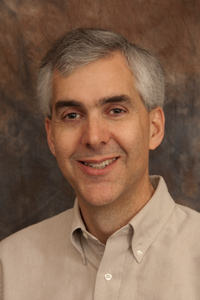 Mr. Tipping is a Health Physicist and Laboratory Manager of the Nuclear Engineering Teaching Laboratory at The University of Texas at Austin. He received his BS degrees in Physics and Mathematics from Texas A&M University-Commerce and then a MS from Kansas State University. As a student at TAMU-Commerce, Mr. Tipping did experimental research on the physics of atomic collisions. He is currently in charge of the health physics program and the radiation safety program for the research nuclear reactor at UT-Austin. He has also worked as the Radiation Safety Officer and/or Health Physicist at the Advanced Molecular Imaging Systems, Inc, the International Isotopes, Inc., and Kansas State University. He was the Editor of “The Accelerator Radiation Safety Newsletter: Official Publication of the Accelerator Section of the Health Physics Society”. In 2006, Mr. Tipping received the Employee and Campus Services SLICE Award at the University of Texas at Austin.
Mr. Tipping is a Health Physicist and Laboratory Manager of the Nuclear Engineering Teaching Laboratory at The University of Texas at Austin. He received his BS degrees in Physics and Mathematics from Texas A&M University-Commerce and then a MS from Kansas State University. As a student at TAMU-Commerce, Mr. Tipping did experimental research on the physics of atomic collisions. He is currently in charge of the health physics program and the radiation safety program for the research nuclear reactor at UT-Austin. He has also worked as the Radiation Safety Officer and/or Health Physicist at the Advanced Molecular Imaging Systems, Inc, the International Isotopes, Inc., and Kansas State University. He was the Editor of “The Accelerator Radiation Safety Newsletter: Official Publication of the Accelerator Section of the Health Physics Society”. In 2006, Mr. Tipping received the Employee and Campus Services SLICE Award at the University of Texas at Austin.
Abstract:
This presentation will define Health Physics and summarize how a simple-minded farm boy from East Texas spends his days using his educational foundation in physics to manage the beneficial uses of radiation at a large research institution while protecting workers, the public, and the environment from potential hazards.
 Dr. Will Newton received in 2008 his DPhil from the University of Oxford, UK where he studied properties of neutron stars and the supernova equations of state. He also received his Masters in Physics from the University of Oxford, UK in 2000 and a research master degree (MSc) in 2002 from the University of Tennessee where he modeled giant resonances in Argon isotopes in collaboration with physicists at the Oak Ridge National Laboratory. He joined the Department of Physics and Astronomy at Texas A&M University-Commerce first as a postdoc in Sept., 2008 and then an Interim Assistant Professor. Dr. Newton’s current research interest is in nuclear physics, astrophysics and the connections between the two, especially in the exploration of dense matter in supernovae and neutron stars. He is particularly interested in linking observable properties of neutron stars and supernovae to properties of nuclear matter such as the incompressibility and symmetry energy that are potentially measurable in terrestrial nuclear laboratory experiments. More information about Dr. Newton and his research can be found at http://williamnewton.wordpress.com/
Dr. Will Newton received in 2008 his DPhil from the University of Oxford, UK where he studied properties of neutron stars and the supernova equations of state. He also received his Masters in Physics from the University of Oxford, UK in 2000 and a research master degree (MSc) in 2002 from the University of Tennessee where he modeled giant resonances in Argon isotopes in collaboration with physicists at the Oak Ridge National Laboratory. He joined the Department of Physics and Astronomy at Texas A&M University-Commerce first as a postdoc in Sept., 2008 and then an Interim Assistant Professor. Dr. Newton’s current research interest is in nuclear physics, astrophysics and the connections between the two, especially in the exploration of dense matter in supernovae and neutron stars. He is particularly interested in linking observable properties of neutron stars and supernovae to properties of nuclear matter such as the incompressibility and symmetry energy that are potentially measurable in terrestrial nuclear laboratory experiments. More information about Dr. Newton and his research can be found at http://williamnewton.wordpress.com/
Abstract:
The properties of systems with large numbers of neutrons relative to protons still present significant theoretical and experimental challenges to nuclear physicists. The properties of certain astronomical entities such as supernovae, pulsars, soft X-ray repeaters and X-ray binaries present significant theoretical and observational challenges to astrophysicists. Remarkably, many of those theoretical challenges have been revealed to have share the same physics underpinning, and an exciting and active area of research has opened up involving a wide range of disciplines. The aim is to understand the nature of strong interactions at extremes of density, temperature and isospin asymmetry and their manifestation in one of the most exotic objects in the universe: neutron stars. I will give an overview of some of the questions being explored, and our own forays, in this field.
 Dr. Anzhong Wang is a professor of Physics at Baylor University, Waco, Texas. He received his Ph.D. degree in Theoretical Physics in 1991 from Ioannina University, Greece. After his postdoc work at Crete & Ioannina Universities, he went to the State University of Sao Paulo at Campinas to work as a research assistant professor, then an associate professor at the Brazilian National Observatory, and a professor at the State University of Rio de Janeiro, before he joined Baylor University in 2003. Dr. Wang's main research interests are in classical and quantum gravity, their applications to cosmology and astrophysics, cosmology in string/M -Theory, and the nature and origins of dark matter and dark energy. More information about Prof. Wang and his research can be found athttp://www.baylor.edu/physics/index.php?id=68588
Dr. Anzhong Wang is a professor of Physics at Baylor University, Waco, Texas. He received his Ph.D. degree in Theoretical Physics in 1991 from Ioannina University, Greece. After his postdoc work at Crete & Ioannina Universities, he went to the State University of Sao Paulo at Campinas to work as a research assistant professor, then an associate professor at the Brazilian National Observatory, and a professor at the State University of Rio de Janeiro, before he joined Baylor University in 2003. Dr. Wang's main research interests are in classical and quantum gravity, their applications to cosmology and astrophysics, cosmology in string/M -Theory, and the nature and origins of dark matter and dark energy. More information about Prof. Wang and his research can be found athttp://www.baylor.edu/physics/index.php?id=68588
Abstract:
I shall first give a brief and basic introduction to anisotropic scaling of space and time introduced by Lifshitz in 1940's in order to make the scalar field renormalizable in condensed matter physics, and then apply them to gravity, as done recently by Horava, the so-called Horava-Lifshitz theory of quantum gravity. I will explain in some detail its major challenges found so far, and show some promising approaches to resolve these problems. Finally, I shall point out some future work.
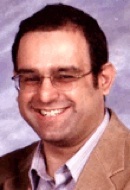 Prof. David Lary (http://utdallas.edu/~david.lary/) is an applied physical scientist interested in computational, information systems and autonomous robotic platforms to facilitate discovery and decision support in Earth System Science and societal applications. David Lary completed his education in the United Kingdom. He received a First Class Double Honors B.Sc. in Physics and Chemistry from King’s College London (1987) with the Sambrooke Exhibition Prize in Natural Science, and a Ph.D. from the University of Cambridge, while at Churchill College (1991). His thesis described the first chemical scheme for the ECMWF numerical weather prediction model. He then held post-doctoral research assistant and associate positions at Cambridge University until receiving a Royal Society University Research Fellowship in 1996 (also at Cambridge). From 1998 to 2000 he held a joint position at Cambridge and the University of Tel-Aviv as a senior lecturer and Alon fellow. In 2001 he joined UMBC/GEST as the first distinguished Goddard fellow in earth science. Between 2001 and 2010 he was part of various branches at NASA/GSFC including the Global Modeling and Assimilation Office, the Atmospheric Chemistry and Dynamics Branch, the Software Integration and Visualization Office, and the Goddard Earth Sciences (GES) Data and Information Services Center (DISC) at NASA/GSFC. In 2010 he moved to the William B. Hanson Center for Space Sciences at the University of Texas at Dallas. His contributions have been recognized by his peers through: Invited contributions to the Royal Society, National Academies, and CDC, two dedicated EGU symposia sessions, four prestigious fellowships, five editorial commendations, six NASA awards, and eighty publications with over a thousand citations in the peer-reviewed literature and a Hirsch index of 17. Since moving to UTD in summer 2010 he has was made a Scholar of the Institute for Integrative Health and has been grants of around $1m from NASA, DoD, and NIH. He was the founding director of the UTD Multi-Scale Integrated Intelligent Interactive Sensing Consortium (MINTS)
Prof. David Lary (http://utdallas.edu/~david.lary/) is an applied physical scientist interested in computational, information systems and autonomous robotic platforms to facilitate discovery and decision support in Earth System Science and societal applications. David Lary completed his education in the United Kingdom. He received a First Class Double Honors B.Sc. in Physics and Chemistry from King’s College London (1987) with the Sambrooke Exhibition Prize in Natural Science, and a Ph.D. from the University of Cambridge, while at Churchill College (1991). His thesis described the first chemical scheme for the ECMWF numerical weather prediction model. He then held post-doctoral research assistant and associate positions at Cambridge University until receiving a Royal Society University Research Fellowship in 1996 (also at Cambridge). From 1998 to 2000 he held a joint position at Cambridge and the University of Tel-Aviv as a senior lecturer and Alon fellow. In 2001 he joined UMBC/GEST as the first distinguished Goddard fellow in earth science. Between 2001 and 2010 he was part of various branches at NASA/GSFC including the Global Modeling and Assimilation Office, the Atmospheric Chemistry and Dynamics Branch, the Software Integration and Visualization Office, and the Goddard Earth Sciences (GES) Data and Information Services Center (DISC) at NASA/GSFC. In 2010 he moved to the William B. Hanson Center for Space Sciences at the University of Texas at Dallas. His contributions have been recognized by his peers through: Invited contributions to the Royal Society, National Academies, and CDC, two dedicated EGU symposia sessions, four prestigious fellowships, five editorial commendations, six NASA awards, and eighty publications with over a thousand citations in the peer-reviewed literature and a Hirsch index of 17. Since moving to UTD in summer 2010 he has was made a Scholar of the Institute for Integrative Health and has been grants of around $1m from NASA, DoD, and NIH. He was the founding director of the UTD Multi-Scale Integrated Intelligent Interactive Sensing Consortium (MINTS)
(http://www.utdallas.edu/mints/MINTS/Welcome.html).
News items, current grants, publications, and his research group are described online at
http://www.utdallas.edu/~DJL101000/DavidLary/Welcome.html .
Abstract:
In many areas of scientific research, a complete observational context, coupled with theory, is invaluable for an in-depth understanding. This context ideally involves integrating (i.e. fusing) observations of multiple parameters from multiple sensors on multiple spatial and temporal scales. Automatically acquiring such observations represents a major challenge. Employing intelligent and adaptive observation strategies that automatically focus on observing the parameters at the locations, times and scales with the highest information content can greatly facilitate acquiring an adequate observational characterization within tractable data volumes. Remote sensing of the Earth and atmosphere traditionally relies on satellite platforms that provide a homogeneous and continuous coverage of the entire planet. However, the spatio-temporal resolution of satellite remote sensing is always inferior to airborne and terrestrial sensing platforms. In recent years, remote sensing from satellites has seen dramatic improvements in both accuracy and spatio-temporal resolution. More than ever, there is a need to close the gap between the satellite, airborne and terrestrial observations. To make best use of these improvements requires a comprehensive treatment of observation representativeness, calibration and validation. Ultimately, merging remote sensing observations on all scales is key to fully exploit the synergies and overcome the limitations of individual sensing techniques.
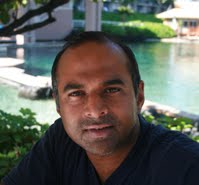 Dr. Sanjay Reddy is a Professor of Physics at the University of Washington in Seattle and a Senior Fellow at the national Institute of Nuclear Theory. He received his Ph.D degree from the State University of New York at Stony Brook in 1998. After his postdoc work at MIT and the University of Washington in Seattle, Dr. Reddy was a Staff Scientist at Los Alamos National Laboratory from 2002 to 2011 before joining the faculty at the University of Washington in Seattle. Dr. Reddy’s main research interests are in nuclear and neutrino astrophysics. In particular, he is interested in nuclear and neutrino processes that are underlying extreme astrophysical phenomena (neutron star structure and evolution, core-collapse supernova, x-ray bursts, magnetar flares, and gamma-ray bursts) as well as applications of quantum many-body theory to nuclei, cold atom gases, nuclear matter, dense quark matter, and related phases in neutron stars. More information about Prof. Sanjay Reddy and his research can be found athttps://sites.google.com/a/uw.edu/sanjay_reddy/home
Dr. Sanjay Reddy is a Professor of Physics at the University of Washington in Seattle and a Senior Fellow at the national Institute of Nuclear Theory. He received his Ph.D degree from the State University of New York at Stony Brook in 1998. After his postdoc work at MIT and the University of Washington in Seattle, Dr. Reddy was a Staff Scientist at Los Alamos National Laboratory from 2002 to 2011 before joining the faculty at the University of Washington in Seattle. Dr. Reddy’s main research interests are in nuclear and neutrino astrophysics. In particular, he is interested in nuclear and neutrino processes that are underlying extreme astrophysical phenomena (neutron star structure and evolution, core-collapse supernova, x-ray bursts, magnetar flares, and gamma-ray bursts) as well as applications of quantum many-body theory to nuclei, cold atom gases, nuclear matter, dense quark matter, and related phases in neutron stars. More information about Prof. Sanjay Reddy and his research can be found athttps://sites.google.com/a/uw.edu/sanjay_reddy/home
Abstract:
I will discuss how X-rays and neutrinos from explosive and transient phenomena can be used to probe the neutron star interior. Properties of matter at extreme density play a key role in shaping the neutrino emission from supernova, and X-ray emission from isolated, accreting and magnetized neutron stars. In this talk we shall explore this connection between the macroscopic observables and microphysical input physics. I highlight accreting neutron stars and core collapse supernova and show how observations can inform us about the nuclear symmetry energy and superfluidity in dense matter.
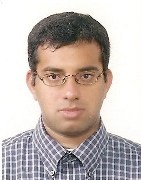
Dr. Varadraj P. Gurupur is an Assistant Professor with the Department of Computer Science at Texas A&M University-Commerce. Dr. Gurupur received his Ph.D. in Computer Engineering from the University of Alabama at Birmingham in May 2010. He was born in Mangalore, India in September 1979. He graduated with a Bachelor’s degree in Computer Science and Engineering from Manipal Institute of Technology, Manipal, India in the year 2001. He received his Master’s degree in Computer and Information Sciences in December 2005 from the University of Alabama at Birmingham, Birmingham, AL USA. Dr. Gurupur worked for the University of Alabama at Birmingham, School of Medicine between April 2007 and July 2011. During his tenure at the University of Alabama at Birmingham he worked as a Data Manager for the Alzheimer’s disease Research Center and as an Information Systems Specialist for the Department of Neurology. He was mainly responsible for improving the IT infrastructure for research. Dr. Gurupur is a recipient of several awards and honors including one international award, a regional award, and two institutional awards. He has worked as a reviewer for several IEEE Southeast conferences. Dr. Gurupur worked as a co-editor for the book titled, “Biomedical Engineering: Healthcare Systems, Technology and Techniques” published by Springer.
Abstract:
The greatest challenge in developing health information systems is the capture of domain information. This is mainly because clinicians are not software developers and viceversa. There are several attempts under development to translate information pertaining to health science into a machine-processible form. However, none of these techniques can be used by clinicians to construct and modify a machine-processible knowledge base pertaining to a specific domain in health sciences. Therefore, we are presenting a methodology to easily develop an extensible and modifiable knowledge base of health science. This methodology involves the development of knowledge base using concept maps. Using this methodology we are developing a prototype application for providing advice to individuals suffering from diabetes. We believe that this proposed system can provide a paradigm shift in developing health information systems.
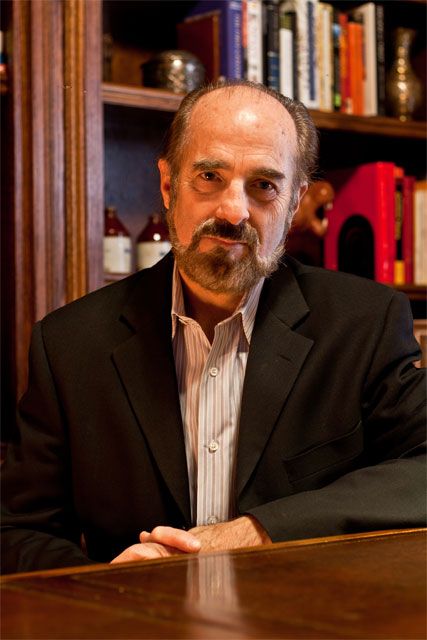
Dr. Lynwood Givens has spent the last thirty years integrating technology and business. Dr. Givens manages financial investments, teaches technology and science courses, and guest lectures at workshops and seminars. His latest book, The Persuasive Wizard: How Technical Experts Sell their Ideas to Non-technical Decision Makers, was written to guide the technologist and scientist in persuasive dialog with investors, managers, and world leaders. He currently is writing two books to be used as High School and College physics supplements, Selected Topics in the New Physics and The Fingerprint of God. Dr. Givens was appointed by Texas governor, Rick Perry, to the Board of Regents of Midwestern State University and placed on a state-sponsored committee to investigate the shortfalls of science education in American high schools and colleges. He recently was Chief Technology Officer of Raytheon Company, Intelligence and Information Systems. Raytheon is the nation’s fifth largest defense contractor. Prior to Raytheon, he was vice president of Space Imaging that launched the world’s first high-resolution commercial imaging satellite. Before, he was director of think-tank science and technology organizations with E-Systems, Inc. He assisted in the acquisition of two companies, Advanced Video Products, a medical imaging company in Boston, and Digital Imaging in San Antonio. He was vice president and general manager of Advanced Video Products. Dr. Givens has worked with every major intelligence organization in the US and in many foreign countries to include the CIA, NSA, NGA, DoD, Air Force Intelligence, Navy Intelligence, Army Intelligence, and Special Operations. He has worked extensively with government technology organizations such as NASA and DARPA and with local law enforcement and national organizations such as the FBI and Border Patrol. He developed imagery products for every major city in the US, working directly with many of the city governments. He has put together contracting technology teams that included Lockheed Martin, Boeing, BAE, Kodak, Autometrics, General Electric, Elbit, Sanborn, AeroVironment, Fischer Imaging, Battelle, Rand, Northrop Grumman, Mitsubishi, Johns Hopkins, SRI, and Baxter, as examples. He is author of over forty refereed publications. He holds five patents and one trade secret disclosure. He has written training courses, video scripts, marketing material, and technology portfolios for companies like E-Systems, Mead, Raytheon, and Texas Instruments. Topics range across image processing, medical technology, high-resolution printing, satellite operations, semiconductor processing, patent protection and rights in inventions, history of the US Intelligence organizations, business plans, and technology analyses. He graduated summa cum laude from Midwestern State University with Bachelor of Science majors in three separate disciplines, Physics, Mathematics, and Chemistry. He was selected an Outstanding Alumnus from both his High School and the University. He earned his Master of Science and Doctorate degrees in Solid-State Physics, with a 4.0 GPA from The University of Texas at Austin. He received a post-doctoral fellowship and taught physics at the University of Texas. He recently served on the University of Texas at Dallas Research Advisory Board. He is a member of the American Physical Society. Dr. Givens has held Top Secret and above security clearances for three decades. He has travelled internationally into twenty different countries — the Far East, the Middle East, Europe, Asia, Central America, and in every state—having made thousands of technology presentations to heads of government agencies, intelligence organizations, representatives of government, military officers, investment groups, heads of companies, CEOs, presidents, vice presidents, and all levels of management.
Abstract:
“We wizards just want to do our jobs, but instead we are ripped from our computers, dressed up smartly, and dumped unprepared in a room full of executives we never heard of nor had any reason to know. We are expected to explain in minutes what required years to formulate, expected to use foreign words like “ROIC” and “pro forma” to explain concepts we understand only by algorithms and equations. And we blunt, factual wizards are told we must do this without stepping on any toes, rocking any boats, or perturbing the equilibrium of any wheeled vehicles toting apples.” While most physicists can adequately explain their work to peers, they usually lack the necessary knowledge and skills to persuade business executives that control finances and approve research projects. This is especially true as physicists move from the academic environment to business. University training most often focuses on public speaking tactics, tactics that are totally ineffective for technologists facing non-technical decision makers. This presentation focuses on some key aspects of technology persuasion: § Bridging the chasm between technologist and non-technical decision maker – What do decision makers want?§ Eliminating the stereotype – Changing the spots on a leopard.§ Structuring a presentation that gets results – Forget the traditional approach. It is wrong.§ Focusing on the outcome – Only the end results count.§ The First Deadly Sin – Followed closely by the Second.
To request a change to this page or to request access to make changes yourself, email helpdesk@tamuc.edu.

